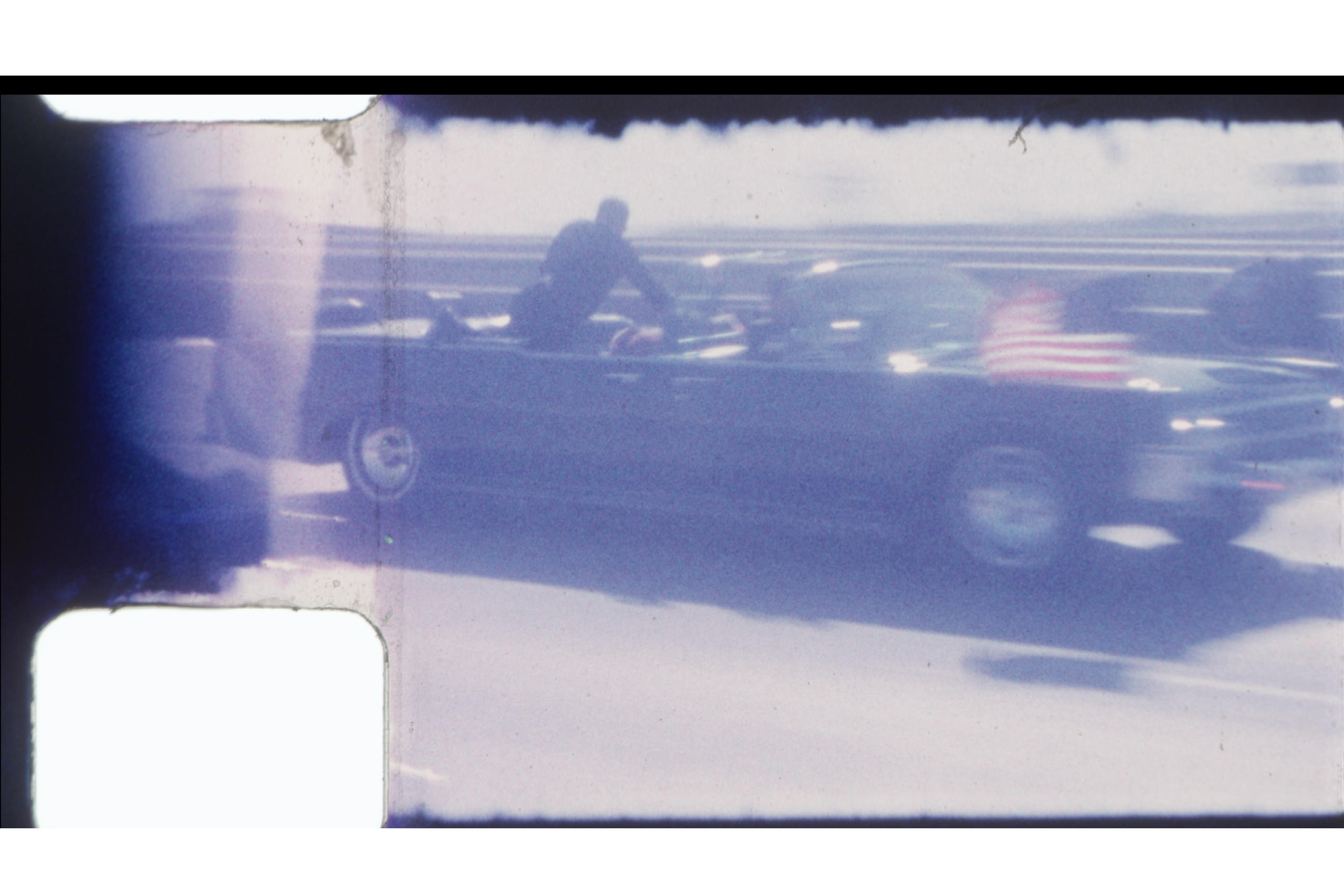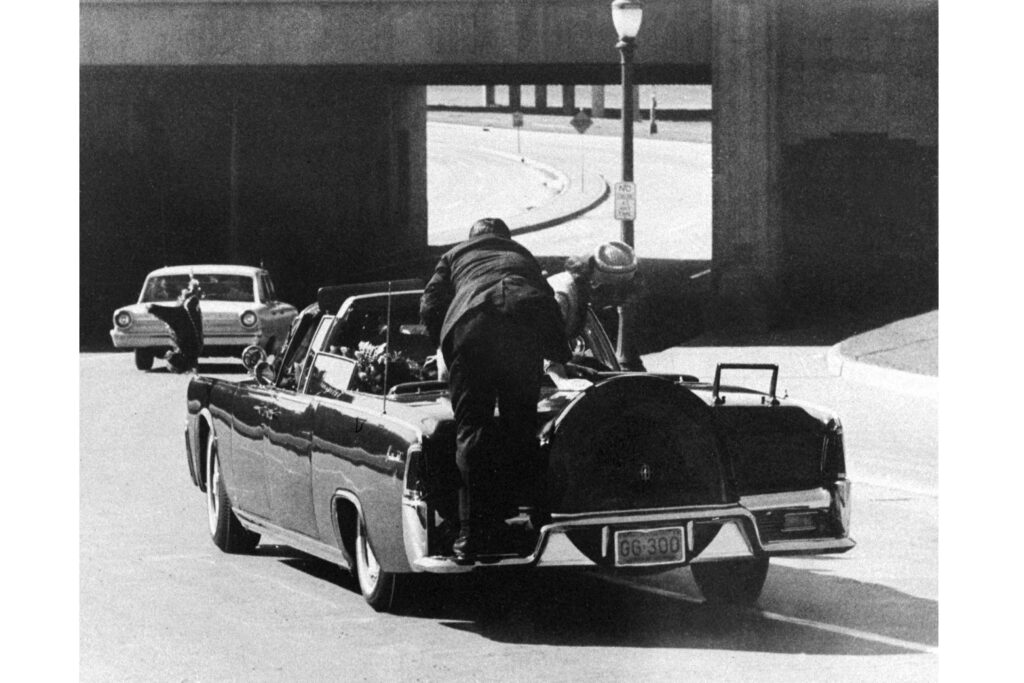Recently uncovered footage of President John F. Kennedy’s motorcade racing down a Dallas freeway to a hospital after he was shot is set to be auctioned later this month.
Experts note that such finds are not unexpected, even more than six decades after the assassination. Stephen Fagin, curator at The Sixth Floor Museum at Dealey Plaza, remarked, “These films and photographs often remain hidden, only to be discovered later in places like attics or garages.”
RR Auction will feature the 8 mm home film in Boston on September 28. The footage begins with Dale Carpenter Sr. just missing the presidential limousine but capturing other vehicles in the motorcade as they proceed down Lemmon Avenue. It continues after Kennedy was shot, showing the motorcade speeding along Interstate 35.
“This is extraordinary, in color, and you can sense the speed of 80 mph,” said Bobby Livingston, executive vice president of the auction house.
The 10-second clip from I-35 features Secret Service Agent Clint Hill, who famously leaped onto the back of the limousine when the shots were fired, hovering protectively over the president and Jacqueline Kennedy, identifiable by her pink suit.
“I wasn’t aware that more shots might follow,” Hill recalled. “I had a feeling that there could be additional shots as I got closer.”
The shots were fired as the motorcade passed through Dealey Plaza in front of the Texas School Book Depository, where assassin Lee Harvey Oswald had taken position on the sixth floor. The assassination was famously captured by Abraham Zapruder.
After the shooting, the motorcade turned onto I-35, racing toward Parkland Memorial Hospital, where Kennedy was declared dead. This route was also intended for Kennedy’s next stop, a speech at the Trade Mart.
James Gates, Carpenter’s grandson, shared that while the family knew about the film, it wasn’t often discussed. When the footage, stored in a milk crate with other family films, was passed to him, he was unsure of its contents. Projecting it onto his bedroom wall in 2010, he was initially unimpressed with the Lemmon Avenue footage but was shocked by what he saw from I-35. “That was astonishing,” he stated, particularly moved by Hill’s precarious position on the limousine.
Shortly after reaching the hospital, Hill spoke with Attorney General Robert Kennedy. “He asked how serious it was, and I didn’t want to tell him his brother was dead,” Hill recounted. “So I replied, ‘It’s as bad as it can get,’ and he hung up.”
In 2012, around the time of Hill’s book release, Gates reached out to Hill and his co-author, Lisa McCubbin, who later married him. McCubbin Hill praised Gates for wanting Hill to see the footage before sharing it further, noting that while she was aware of Hill’s account of the scene, seeing the actual footage was profoundly impactful.

The auction house has shared still images from the film but has not released the segment showing the motorcade on the interstate.
Historian and filmmaker Farris Rookstool III, who has viewed the film, stated it provides a more comprehensive view of the urgent rush to Parkland compared to other, more fragmented footage. He hopes the film will be used by filmmakers after the auction.
Fagin emphasized the significance of the assassination, suggesting that people instinctively retained related materials, making it likely for new discoveries to emerge. He recalled wondering for years about a man seen taking photographs on that day, only to learn in 2002 that Jay Skaggs, the photographer, had brought a shoebox of images to the museum, including rare color photographs of the rifle and the Texas School Book Depository.
In December 2022, the National Archives released a substantial collection of documents related to JFK’s assassination, following President Biden’s order for their disclosure, although many sensitive records remain sealed. The Archives noted that 97% of approximately 5 million pages related to the assassination are now public, yet some experts believe important information is still being withheld to protect agencies like the CIA.

